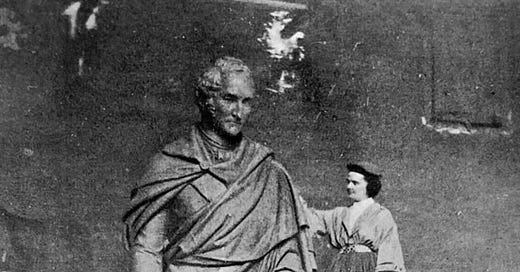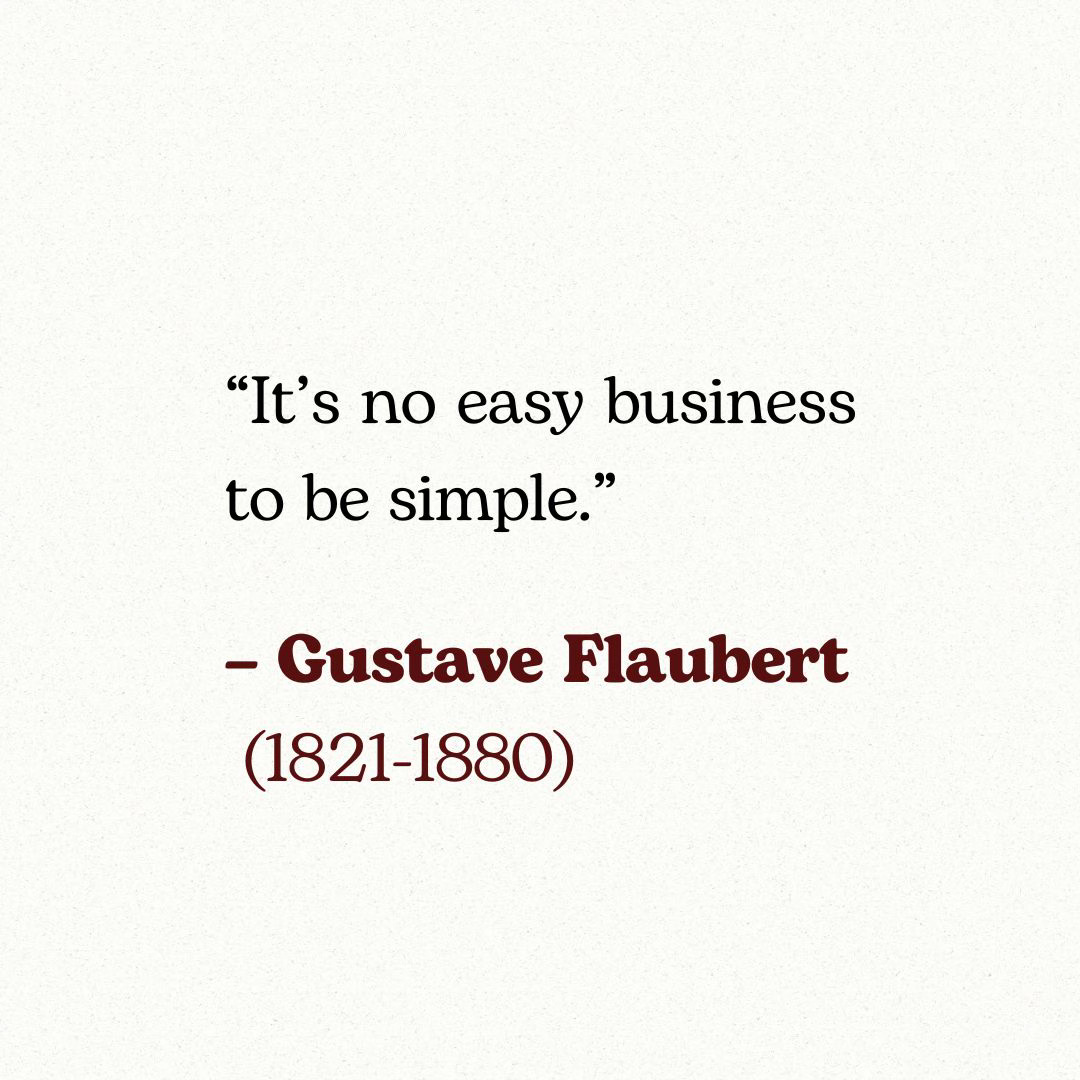What are the habits of artists? They’re as wide-ranging as human personality and life’s circumstances.
And as Mason Curry relates it in his book, Daily Rituals: How Artists Work, an artist’s habits are invariably coordinated to some kind of ritual. "A solid routine," writes Curry, "fosters a well-worn groove for one's mental energies and helps stave off the tyranny of moods."
Whether you rise every day at 5:30AM, as Ernest Hemingway did, or at 10AM, as Gustave Flaubert did, and whether you subsist on amphetamines as W. H. Auden did or maintain a vigorous schedule of boxing, jumping rope, gymnastics and running, as Joan Miro did, the purpose of a ritual is to keep you moving forward.
The worst thing conversely is to lurch from one impulse to another: to keep altering your work start hour, eating time, or bedtime, without any sense of rhythm or purpose. Some things, of course, will always remain out of our control, especially within certain seasons of life, during the early parenting years, for instance, with its high intensity output, or periods of chronic and debilitating illness. But, where possible, the establishing of a good ritual channels the passions, of both wieldy and unwieldy sort, in the right direction.
While a bit severe, Auden largely gets the basic point right, in the end: "A modern stoic knows that surest way to discipline passion is to discipline time: decide what you want or ought to do during the day, then always do it at exactly the same moment every day, and passion will give you no trouble."
If you're Auden, that is; or a stoic.
Daily Rituals is a book that I’ve included in my syllabus for my “Vocation of the Artist” course at Fuller Seminary and the kind of book I would recommend to every artist (or writer or scholar or teacher or human being) for two reasons.
One, it offers readers a wide range of rituals that have worked for all sorts of people, from poets to philosophers, and from mathematicians to painters, and there is a good chance you might find your personality type represented and thereby receive some sort of encouragement to apply yourself again to a ritualized (and therefore hopefully satisfying) life of labor.
Two, it is an entertaining book. The excerpts are bite-sized, the anecdotes insightful or humorous, and the author works with a broad time period, from Benjamin Franklin (1706-1790) to Maya Angelou (b. 1928), and with a variety of personalities, from Jane Austen (1775-1817) to David Lynch (b. 1946). He also includes a helpful list of resources to follow up with each excerpt.
Are there commonalities in Currey’s book? A few, yes.
Coffee, chocolate and cigarettes seem to be a favorite stimulant of artists. Taking long walks serves for many as a way to give the mind a rest while it simmers on the day's work.
Lots of artists loved their naps. Frank Lloyd Wright, for example, napped twice daily, Joan Miró indulged a five-minute cat nap in the long afternoon hours, while Thomas Mann took an hour-long one at precisely 4PM. His six children were forbidden to make any noise during this “sacred hour.” (God forbid.)
Plenty of artists loved their morning baths. Some liked to walk around naked before the start of day.
Half were given to melodramatic lives (like Toulouse-Lautrec), half preferred a well-tempered life (like Richard Strauss). Novelists tended to prefer a few hours of quality work, while painters often worked at all hours of the day.
The majority of individuals included in this volume were not parents responsible for small children. This is important to state in bold terms.
Karl Marx, for example, seemed to regret his marriage, while Gustav Mahler apparently took his wife for granted. Of those that did care for children, a surprising number had servants to help, or wives, or, in some cases, sizable inheritances in order to underwrite all sorts of expenses, not just for the care of one’s children but also for the precious time that’s required to think deeply and to create in a state of “flow.”
It’s these many helps that often enable the “Great Minds” to accomplish great things, which, in turn, by luck or by grace, and through a heck of a lot of hard work, earn the individual an invitation into the pantheon of “classic” or “canonical” artists.
Which is where volume 2 comes in: Daily Rituals: Women at Work. Whereas Currey’s first book had only included twenty-seven women out of the one hundred and sixty-one total entries, in his second he profiles one hundred and forty-three women who range from the canonical (George Eliot and Virginia Woolf) to the contemporary (Zadie Smith and Ruth Asawa).
Regretting the under-representation of women in Volume 1, Currey produced this follow-up book as “a sequel, and a corrective.” Included in this edition are Pina Bausch, Coco Chanel, Frida Kahlo, Marie Curie, Ruth Awawa, and Yayoi Kusama.
It’s a fabulous and much-needed complement to volume one, and while there are plenty more that could have been included and while all sorts of asterisks need to be applied to entries from both volumes in order to account for idiosyncratic variables that contribute to an artist’s success, both volumes do what no other book on my shelf accomplishes: they show us in succinct form the genius of a good ritual.
I’ll be drawing on Currey’s book, in addition to my own research into the lives of artists, for my book with Brazos Press on the vocation of artists, which now has an official title: To Light Up the World: How Artists Bear Witness to the Fullness of God’s Creation. More on that fun fact soon.
Here are a few additional fun tidbits:
Rachmaninov (1873-1943): “Today I worked only from 9 a.m. to 12:30. Then lunch, and now I write you instead of working. I have one free hour and then an hour’s walk. Then 2 hours’ practice, and then I retire with the chickens. Thus I have only about 4 hours a day for composition. Too little!”
Francis Bacon (1909-1992): "Bacon would read and reread classic cookbooks to relax himself before bed."
Thomas Wolfe (1900-1938): "Wolfe typically began writing around midnight, 'priming himself with awesome quantities of tea and coffee', as one biographer noted."
Patricia Highsmith (1921-1995): "Highsmith only ever ate American bacon, fried eggs and cereal, all at odd times of the day." She also had a love affair with snails, housing three hundred of them in her garden in Suffolk, England. She "once arrived at a London cocktail party carrying a gigantic handbag that contained a head of lettuce and a hundred snails--her companions for the evening, she said."
Ingmar Bergman (1918-2007): "In the evening, he read, saw friends, screened a movie from his large collection, or watched TV (he was particularly fond of Dallas)."
Wolfgang Amadeus Mozart (1756-1791): "My hair is always done by six o'clock in the morning and by seven I am fully dressed. I then compose until nine. From nine to one I give lessons.... I can never work before five or six o'clock in the evening, and even then I am often prevented by a concert. "
Ludwig van Beethoven (1770-1827): "If he did not dress to go out during the morning working hours, he would stand in great deshabille at his washstand and pour large pitchers of water over his hands, bellowing up and down the scale or sometimes humming loudly to himself. Then he would stride around his room with rolling or staring eyes, jot something down, then resume his pouring of water and loud singing."
Bernard Malamud (1914-1986): “The real mystery to crack is you.”














